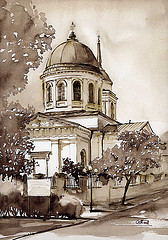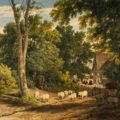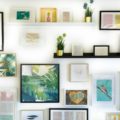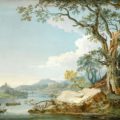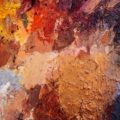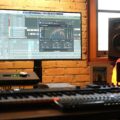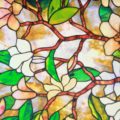Watercolor! The delightful word evokes a sense of lightness, luminosity, and, indeed, anxiety! Who would have thought that a blank sheet of paper could be so daunting?
For the beginner watercolor artist, there are some fundamental guidelines that can lead to enjoyment and success.
Firstly, let’s talk about paper. Watercolor paper comes in three grades: Hot Pressed, which has a smooth texture; Cold Pressed (or Not), which is slightly rougher and has more tooth; and finally, Rough, which has a notably textured surface.
The paper is also available in various weights. For beginners, a medium-weight Cold Pressed surface is ideal. It is easy to handle, can withstand rough treatment, and its texture allows for interesting effects.
Secondly, consider the paints themselves. They come in two forms: solid blocks or ‘pans’, and tubes of liquid color. The available color options can be overwhelmingly diverse. Avoid the pans or blocks, as they require scrubbing with a brush to extract color, making it difficult to blend large washes. Tubes, on the other hand, allow you to easily squeeze a satisfying amount of color onto your palette.
There’s no need to purchase expensive artist-grade colors. Student-quality colors from a reputable brand are sufficient and discourage you from being stingy with your precious hues.
Which colors should you have in your collection? Just a few essentials are needed: Payne’s Gray, Ultramarine Blue, Cadmium Yellow Light, Raw Sienna, Burnt Umber, and Alizarin Crimson. You can also add Vermilion if desired. However, avoid pre-mixed greens; there is no green that can’t be better blended with the colors mentioned above. Also, don’t rely on white paint – that’s what the paper is for. Chinese white is almost opaque and goes against the essence of good watercolor.
Now, let’s discuss brushes. With a vast array of options, it can be confusing. However, you only need four basic brushes: one large (about 1.5-inch wide) wash brush, a 1-inch flat brush, a 0.5-inch flat brush, and a fine brush for detail work. A Size 3 rigger brush is ideal for fine lines, as it was traditionally used for painting the delicate ropes and lines on sailing ships.
A soft 2B pencil and an eraser are also necessary, along with some old plates for mixing Music Production - Improve Your Sound - The rise in popularity of work-from-home studios has significantly impacted the music production landscape in recent years, driven by the increasing availability of tools and technology. This growth has led to the emergence of mobile recording rigs, making it possible to record full band performances anywhere. While one might anticipate a wealth of high-quality music,… . Then you’re all set!
Find a watercolor artist whose style you admire and choose one of their paintings to copy. While this brief article doesn’t cover composition, wash techniques, or wet-into-wet approaches, you can consult books (preferably from the library) on watercolor and watercolor techniques.
Explore a wide range of sources and choose what instinctively appeals to you. Watch videos and DVDs to observe tools and techniques used, and then replicate what you see. Don’t waste time reinventing the wheel – take advantage of the work done by others before you.
Use both sides of the paper, date and save everything you create. It may not look perfect at first, but soon you’ll look back on your early attempts with a fond smile. Familiarize yourself with your tools and colors – treat them like your best friends. Masterful watercolor artists Landscape Painting Advise For Watercolor Artists - One of the most significant challenges beginners face with any form of art is the ability to truly connect with the creativity that resides within them. It can be difficult initially to let go and create from your inner self. Learning techniques is crucial, but there should be a point where you begin to draw… know exactly what will happen when they apply paint and water to the paper.
Manuel Marino is a seasoned Senior Producer, Music Composer, and Artist with over a decade of experience. He specializes in branded entertainment across various mediums, including video games, films, and advertising campaigns. With 20+ years as a game music composer, Manuel has worked on numerous platforms, creating diverse orchestral soundtracks. HIRE ME


 Manuel is a passionate, driven, and techsavvy AV technician,
Manuel is a passionate, driven, and techsavvy AV technician, 